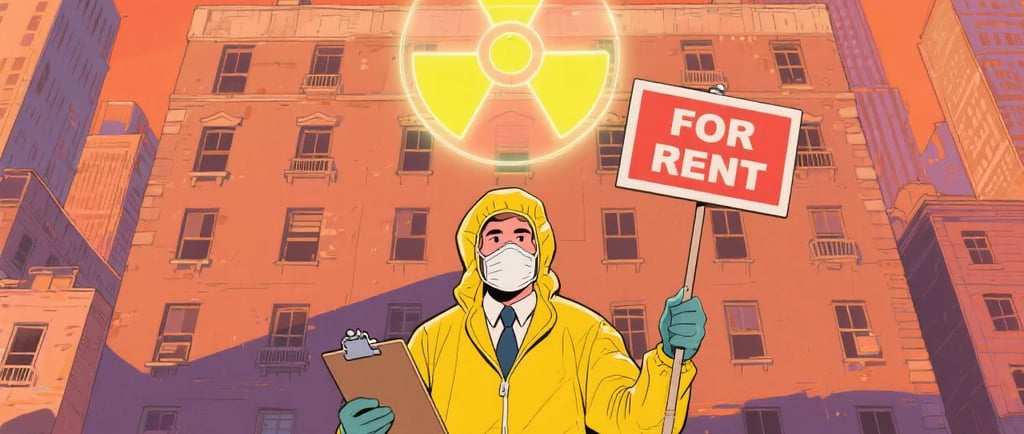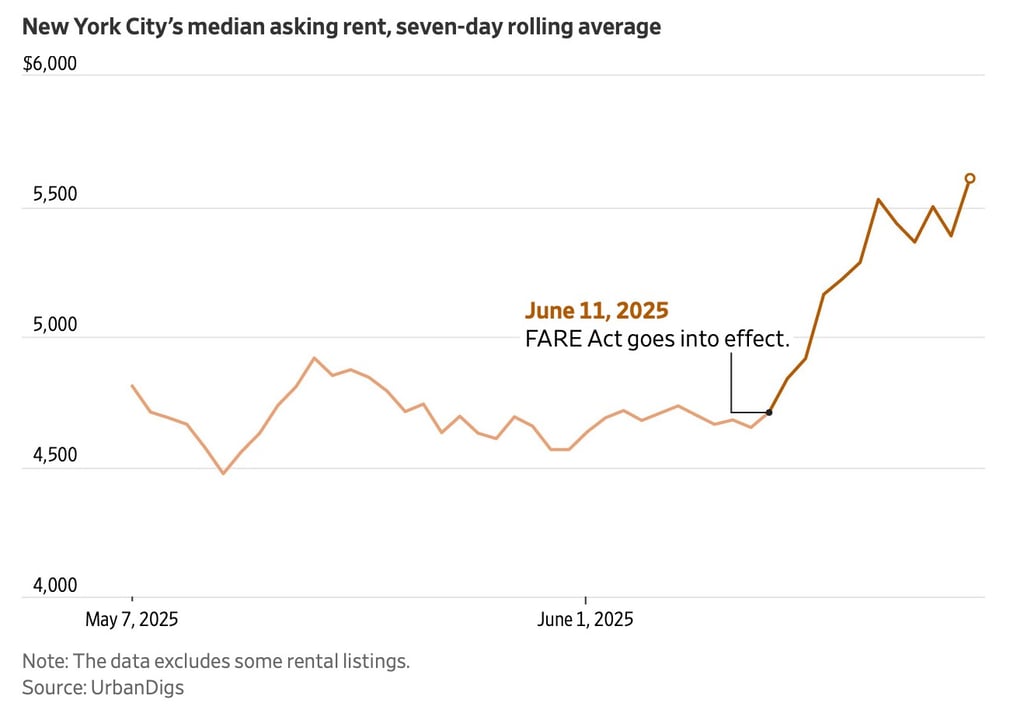M10_Fare Act Fall Out
The road to hell is paved with good intentions.
REAL ESTATE
Martin DuPain
6/28/20252 min read


On June 11, 2025, New York City renters woke up to a new reality. The FARE Act, billed as a win for tenants, had just gone into effect. But as the ink dried on the legislation, the city’s rental market responded in ways few policymakers had predicted. Instead of relief, many renters found themselves facing a market with fewer choices, higher prices, and a new set of hurdles (The Real Deal).
Background
The FARE Act was designed to shift the burden of broker fees from tenants to landlords, eliminating a significant upfront cost for renters. In theory, this would make New York’s notoriously expensive rental process more accessible (StreetEasy). However, as with many well-intentioned interventions, the law’s real-world effects have been more complicated. Landlords, now responsible for broker fees that often amount to 12–15% of annual rent, have responded by raising asking rents and rethinking how—and whether—to list their apartments publicly (MSN, Pinpointe).
Key Insights
The data tells the story. As shown in the attached chart, median asking rents in New York City spiked nearly 15% in the week following the FARE Act’s implementation, a reaction that stunned even seasoned market watchers (NY Post). Landlords, seeking to recoup their new costs, have baked broker fees into monthly rents, spreading the expense over the lease term and making it less visible but no less real for tenants. At the same time, rental listings dropped sharply as some landlords paused or pulled units from public platforms, opting instead for self-listing or off-market deals (The Real Deal). The result: less inventory, more competition, and a process that’s become even more opaque and inefficient for renters (Pinpointe). Those seeking apartments now face higher income requirements and, in many cases, must navigate a fragmented, less transparent market (SILive).
Conclusion
The FARE Act’s fallout is a cautionary tale about the unintended consequences of government intervention. By attempting to legislate away a pain point, policymakers have inadvertently created new ones—higher rents, reduced choice, and a less efficient marketplace (The Berkson Group). As the city adjusts, both renters and landlords are left to navigate a landscape that is, in many ways, more challenging than before. When government steps in to “fix” market problems, the result is often less choice, higher prices, and more inefficiency—leaving those it aims to help facing new and unexpected obstacles. For example, in the Soviet Union, central planning and price controls led to chronic shortages of basic goods, forcing citizens to wait in long lines for essentials like bread and meat, and fueling a vast black market for everything from sausage to blue jeans. The planned economy failed to account for real consumer needs, resulting in empty shelves and wasted resources (Russia Beyond, Investopedia)
For further discussions, inquiries or to delve deeper into this analysis, please feel free to get in touch.

